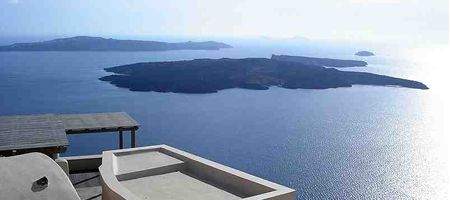A giant ‘balloon’ of magma has been welling up under the Greek island of Santorini, raising it an extra five and a half inches above the sea.

A new survey suggests that the chamber of molten rock beneath the island’s volcano expanded by up to 20 million cubic metres between January 2011 and April 2012.
The volcano had its last major explosive eruption 3,600 years ago, burying the island under metres of pumice. And while the rate of earthquake activity has dropped off in the past few months, it’s possible that another could be on the way.
In January 2011, a series of earthquakes began beneath the islands of Santorini – very small ones but the first sign of activity beneath the volcano to be detected for 25 years.
Following these, Oxford University DPhil student Michelle Parks spotted signs of movement in satellite radar images and a new survey of the island was carried out.
“People were obviously aware that something was happening to the volcano, but it wasn’t until we saw the changes in the GPS, and the uplift on the radar images that we really knew that molten rock was being injected at such a shallow level beneath the volcano,” says Dr Juliet Biggs of Bristol University.
The team says that these observations don’t necessarily mean an eruption is about to happen. But, they say, in the last year alone, as much as 20 years’ worth of molten rock has arrived beneath Santorini.






